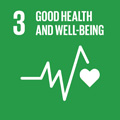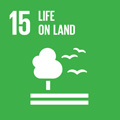- Docente: Carlo Tamanini
- Credits: 6
- SSD: VET/02
- Language: Italian
- Moduli: Carlo Tamanini (Modulo 1) Diego Bucci (Modulo 2)
- Teaching Mode: Traditional lectures (Modulo 1) Traditional lectures (Modulo 2)
- Campus: Bologna
- Corso: Single cycle degree programme (LMCU) in Veterinary Medicine (cod. 8617)
Learning outcomes
This course is designed to give students knowledge of the cardiovascular, endocrine, respiratory, renal, and reproductive systems of domestic animals with emphasis on physiologic control mechanisms and interrelationships of body systems.
Course contents
Skeletal muscle. Muscle contraction. Mechanical properties of skeletal muscle. Mechanisms of muscular contraction. The cardiovascular system and blood flow. The heart: gross structure and myocardial cells. Electrophysiology of the heart. Mechanical activity and regulation of the heart. Control mechanisms of the circulatory systems. Regional and foetal circulations. Mechanics of respiration. Pulmonary ventilation. Oxygen and carbon dioxide transport. Regulation of respiration. Respiratory clearance. Anatomy of the kidney. Glomerular filtration. Tubular transport. Renal clearance. Concentration of urine. Acid-base regulation and the excretion of bicarbonate, hydrogen ion and ammonia. Micturition.
Readings/Bibliography
Readings/Bibliography
Aguggini G., Beghelli V., Giulio L.F Fisiologia degli animali domestici con elementi di etologia,UTET, (1998).
Dukes', Fisiologia degli animali domestici Ed. IDELSON GNOCCHI (2002)
Sjaastad, Sand, Hove. Fisiologia degli Animali Domestici. Ed. It. a cura di C. Tamanini. CEA (2013)
Link istituzionaliTeaching methods
Ex cathedra lectures, seminars, practical activities (in lab, in presence and/or online).
Assessment methods
Assessment
According to the actual regulations, the student needs to follow both lessons and exercises. The final exam can be either oral or written; the students will be informed during the course about the ways. Students should demonstrate to know all the items present in the program; in particular, students should show to be able to link the different arguments, to have a deep knowledge of the topics and to speech properly.
Teaching tools
Didactic materials
Please, see the didactic materials of this teaching course.
Office hours
See the website of Carlo Tamanini
See the website of Diego Bucci
SDGs


This teaching activity contributes to the achievement of the Sustainable Development Goals of the UN 2030 Agenda.
